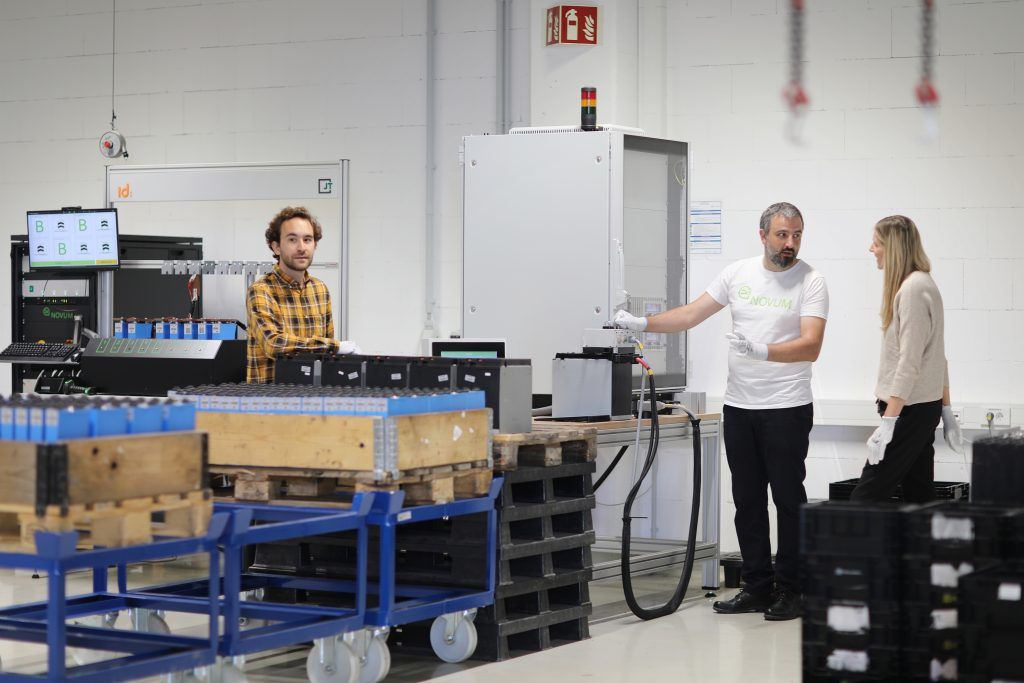A battery pack is a group of battery modules that are combined into a single unit or enclosure through a battery management system (BMS) to achieve a specified total capacity and power. The battery modules can be connected in series or parallel to increase the voltage and capacity of the pack.
Where are battery packs used?
Battery packs are used, for example, in electronic devices such as laptops, smartphones and cameras. They can be used in electric vehicles and hybrid vehicles to store and supply the electrical energy. They are also used in stationary energy storage systems to store surplus electricity from renewable energy sources and release it when needed.
Dangers when using battery packs
The use of batteries or battery packs, as with all electrochemical systems, is always associated with certain hazards. The extent of the risks depends on the type, size and production quality as well as the handling and storage conditions.
Typical hazards are:
- Fire and explosion hazard: If battery packs are overcharged, shorted or damaged, they can quickly heat up, catch fire or even explode
- Chemical hazard: Batteries contain chemical substances that cause damage to health if handled improperly
- Electrical hazard: Battery packs can generate high voltages and currents that can cause serious injury or even death
- Environmental hazard: If battery packs are not disposed of properly, they can cause environmental damage and affect human and animal health.

Can battery packs be inspected using NOVUM technology?
The answer is definitely yes! With our battery analyzer we can check individual battery cells as well as packs and modules. The elements do not have to be dismantled for this. Battery diagnostics can not only identify potential risks: Using the data from the battery condition assessment, it is possible to assign the battery to different categories so that it can be reused in a second or even third life. In this way, the service life can be increased and the use of batteries can be made more efficient and sustainable.
What information results from AI-based diagnostics of battery packs with NOVUM technology?
- State of Charge (SoC)
- State of Health / State of Wear (SoH)
- Homogeneity and correct balancing of the cells
- Capacity
- Expected life
- Battery residual value
- Anomalies that can lead to defects and failures
In some cases, our customers want to test their batteries not only at pack or module level, but also at cell level. With the help of our Cell Analyzer, this is also possible in just a few seconds — even for eight cells simultaneously.
We will be happy to advise you on whether it makes sense to make this effort and which test procedure will benefit you most in your company. We will also be happy to help you if you are planning to reuse your battery packs in a second or third life, for example in vehicles or in battery storage.

Does it make sense to reuse battery packs?
In principle, it makes sense to use batteries for a second or even third life. However, continuing to use entire battery packs unchanged only makes sense in individual cases — for example, when vehicle batteries are still so good that they can be installed unchanged in another vehicle. However, if batteries change purpose and move from vehicles to stationary battery storage, it is usually advisable to disassemble the battery packs into their individual modules and install them in the storage systems.
The background is as follows: within a battery pack, not all battery modules are equally good. Due to the operation in the first life, there are always one or two modules that can not keep up with the others in terms of quality. If these modules are not sorted out, they will later affect the lifetime of the entire 2nd-life memory. We therefore generally recommend building storage systems from used battery modules and not from whole battery packs.




